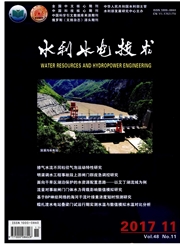

 中文摘要:
中文摘要:
为从细观结构上研究混凝土劈裂抗拉强度,通过自编程序建立混凝土细观模型,采用混凝土损伤塑性模型描述细观各相材料的损伤演化。利用有限元技术数值模拟三级配混凝土试件的细观损伤断裂和劈裂抗拉强度,探讨了不同骨料分布、骨料形状、垫条宽度及界面厚度对劈裂抗拉强度的影响。结果表明:不同骨料分布和骨料形状对劈拉极限强度略有影响,但数值模拟结果均在试验统计范围内,且与文献资料中给定的试验结果相符。按照现行试验规程选取垫条宽度时,可以有效地缓解加载部位应力集中现象,使劈拉强度接近真实混凝土强度。骨料粘结界面厚度越小,混凝土劈拉极限强度越高。
 英文摘要:
英文摘要:
In order to study the splitting tensile strength of concrete from the meso-structure, the damage evolutions of all the me- soscopic phases of the material are described with the concrete damage-plasticity model through the concrete mesoscopic model established by self-programming. The meso-damage fracture and splitting tensile strength of the three-graded concrete specimen are numerically simulated with the finite element technique for researching the impacts from various aggregate distributions, aggregate shapes, spacer widths and thicknesses of interface on the splitting tensile strength. The result shows that different aggregate distributions and shapes only have less impacts on the ultimate splitting tensile strength, however, the numerical simulation results are all within the range of the experimental statistics and coincide with those from the experiments given in the relevant literatures. When the spacer width is selected in accordance with the current experiment rule concerned, the phenomena of the stress concentrations at the loading locations can be effectively alleviated, and then make the splitting tensile strength approach to the real strength of concrete. The smaller the thickness of the aggregate bonding interface is, the higher the ultimate splitting tensile strength is to be.
 同期刊论文项目
同期刊论文项目
 同项目期刊论文
同项目期刊论文
 期刊信息
期刊信息
